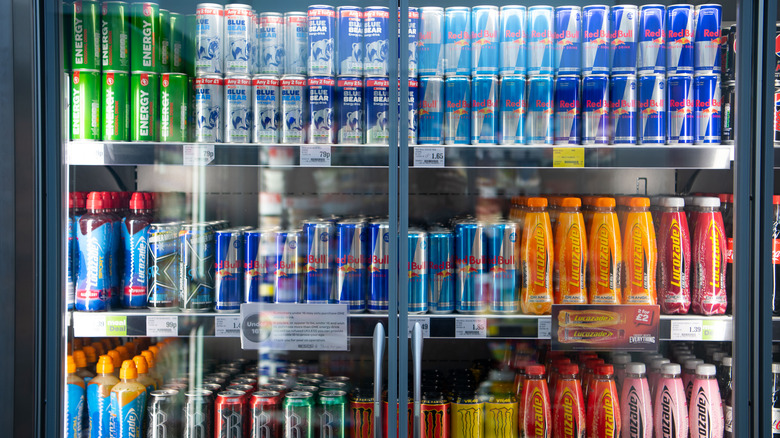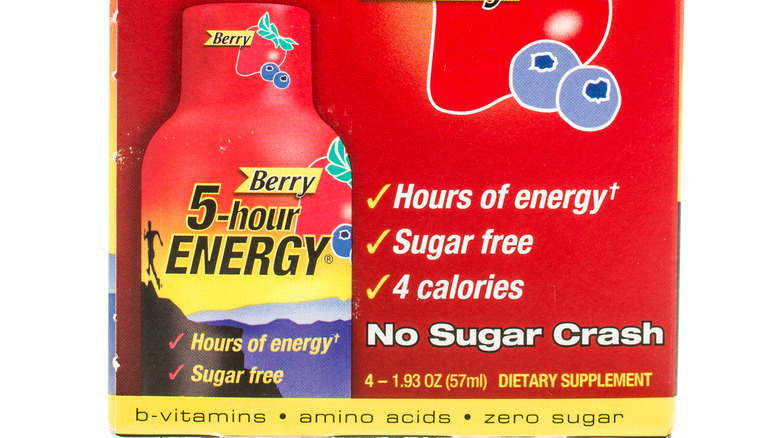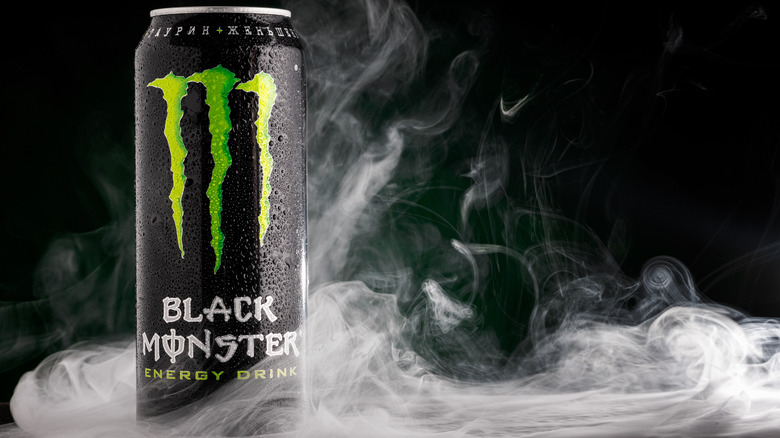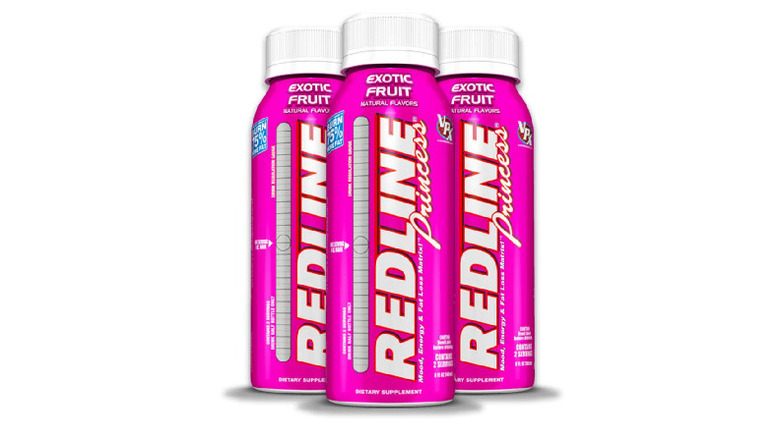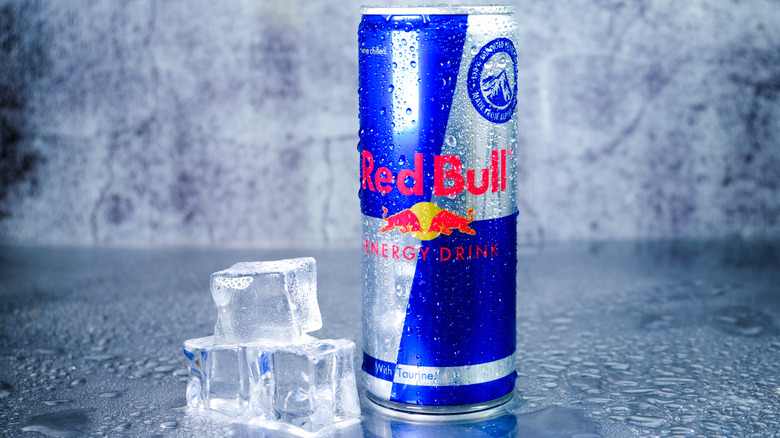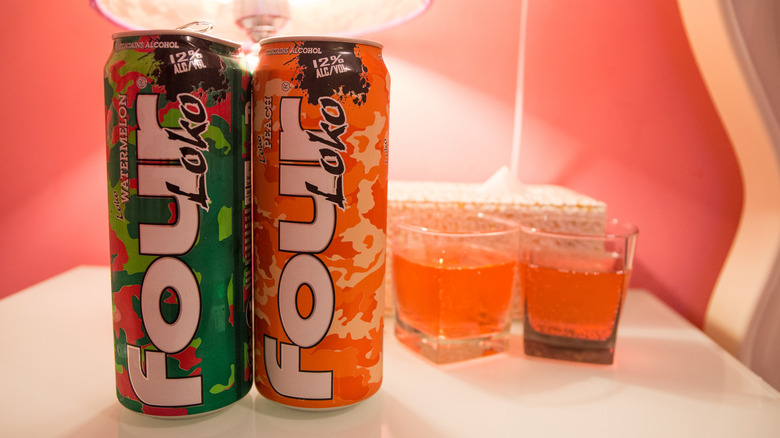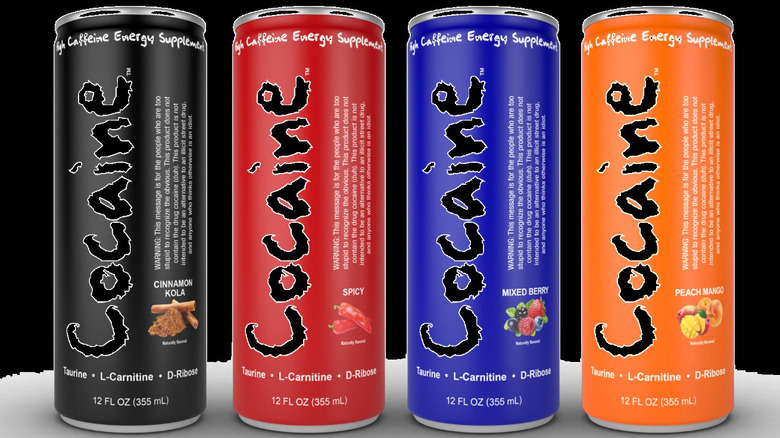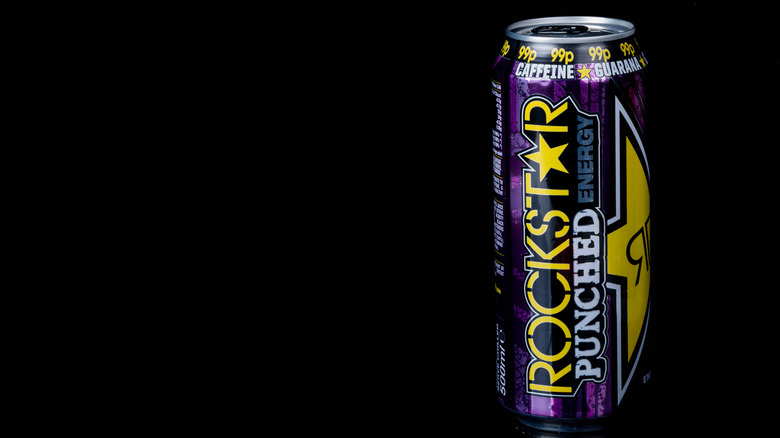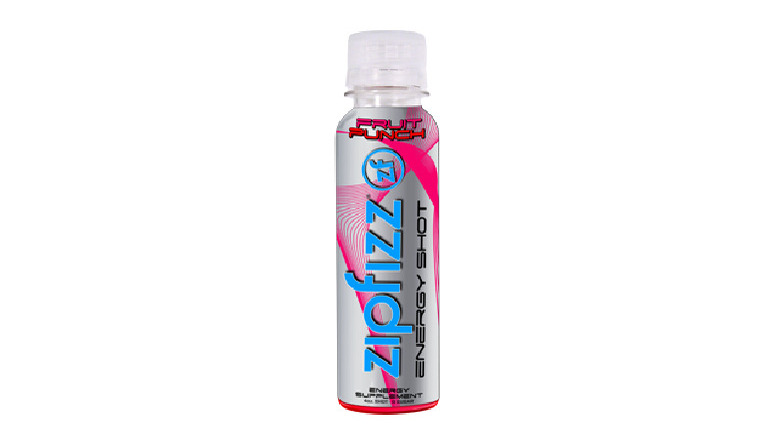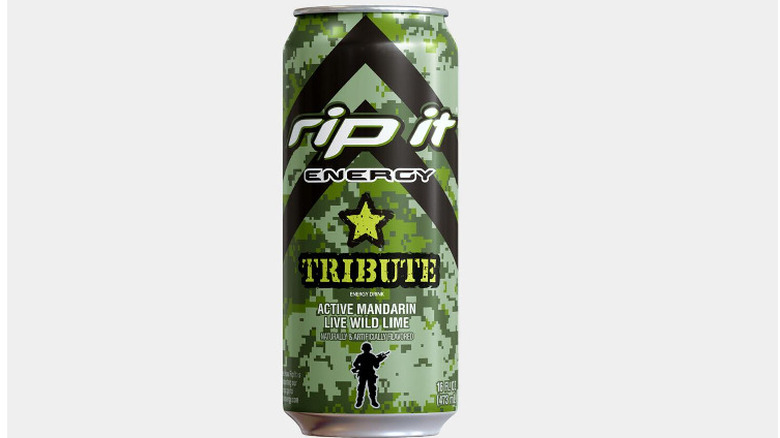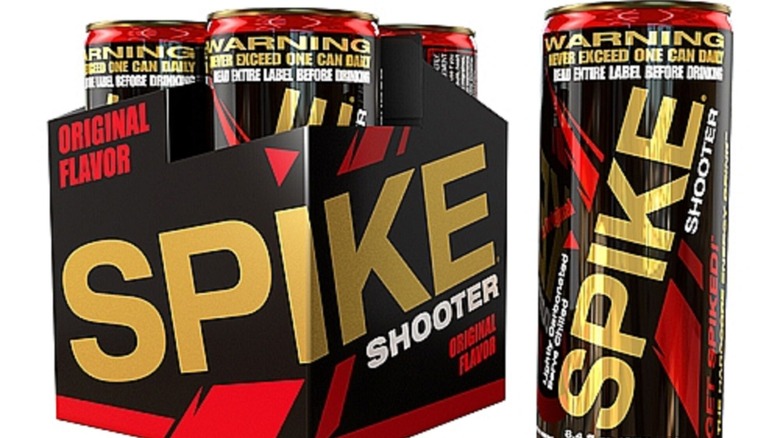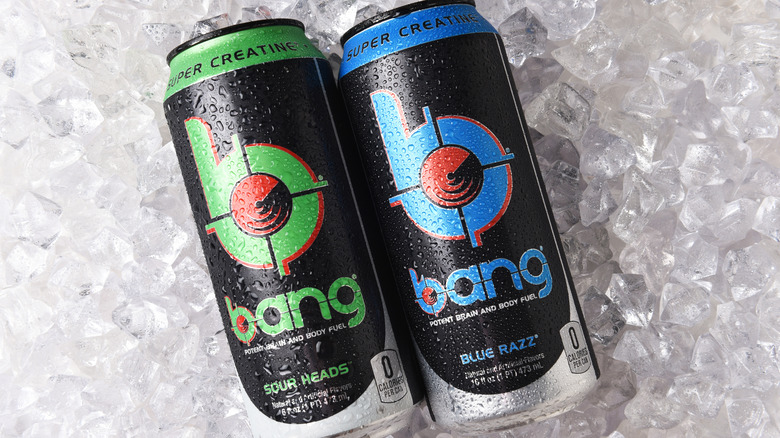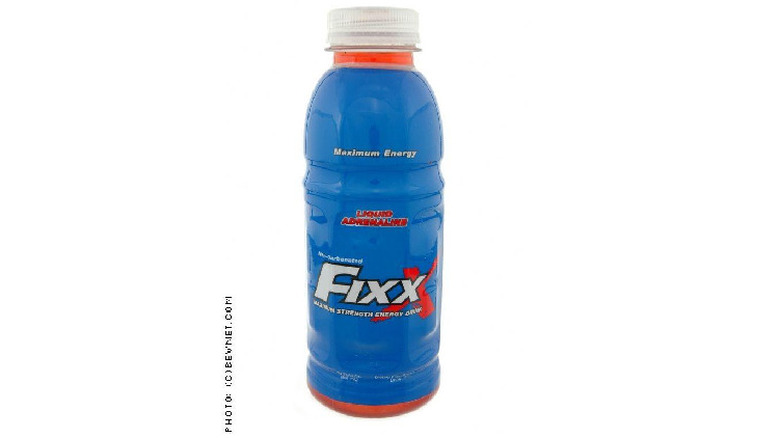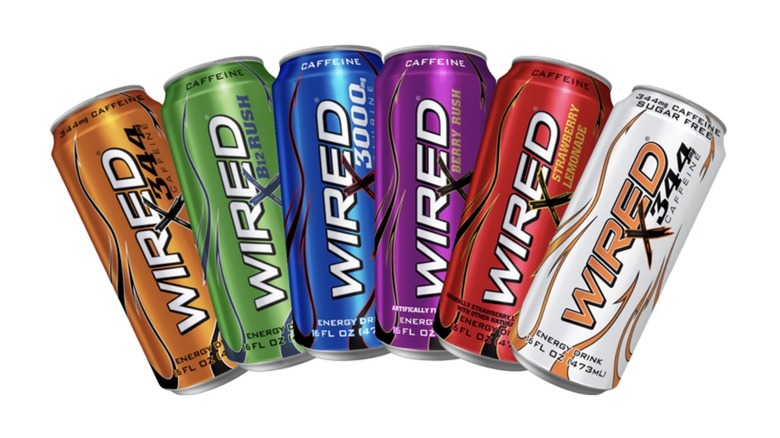The Most Dangerous Energy Drinks Ever Made
Energy drinks are some of the top selling beverages worldwide, with a 2020 global market size of a staggering $57.4 billion. Consumers enjoy them for their bright colors, fun flavors, and the jolt of energy they provide. But these drinks have a lot more to them than meets the eye.
Some energy drinks, like Monster and 5-Hour Energy, are not (legally) beverages at all. Rather, they are classified as supplements. This means that they are held to a different set of rules than conventional food products. While sodas have a legal caffeine cap, energy drinks do not. Energy drinks are also allowed to contain a proprietary blend of substances, and while manufacturers must list the blend's contents, they do not have to list how much extra caffeine they contain or what amount of each additional stimulant is included. These supplement rules leave consumers with little information about what is actually in their drinks.
As you might expect, this lack of clarity has led to some dangerous situations. Energy drinks have been linked to insomnia, mental health issues, elevated heart rate, hepatitis, and even death by cardiac arrest. Despite all of this, many of the products responsible are still on the market, and you might even be surprised to find your favorite beverage on this list of the most dangerous energy drinks.
5-Hour Energy — little shot, big boost
At just 2 ounces, this energy "shot" contains 200 mg of caffeine per bottle — nearly twice as much as some 16-ounce energy drinks. (For context, an 8-ounce cup of brewed coffee contains roughly 100 mg). Drinking this much caffeine quickly can raise your heart rate massively, and is probably why the company lists a serving size as half a bottle. But let's be honest, when faced with a bag of chips or a bottle of soda, who is really consuming a single serving? The even more powerful 5-Hour Energy Extra Strength contains 230 mg of caffeine.
5-Hour Energy also has 20,833% of the daily recommended amount of vitamin B12, 2,353% of B6, and 188% of niacin, another B vitamin, per serving. B vitamins are often included in energy drinks for their effect on brain function and energy levels. However, high levels of B vitamins can cause adverse effects like gastrointestinal stress, insomnia, high blood pressure, and even skin rashes.
Based on this information, it is perhaps not surprising that 5-Hour Energy came under fire from the FDA in 2013, after 33 hospitalizations and 13 deaths were tenuously linked to the energy "shot." CBS reports that the causes of the hospitalizations included heart attacks, convulsions, and even one case of spontaneous abortion. It seems nothing came of this investigation, so presumably the link wasn't very strong.
Monster — marketing to minors
As the second highest selling energy drink in the US (behind Red Bull), Monster Energy is incredibly popular. Unfortunately, its popularity has no bearing on its safety as a product. One 16-ounce can of Monster contains 160 mg caffeine in addition to 15% of the recommended daily sodium allowance, 54 g of sugar (1.5 or 2 times your daily allotment for men and women, respectively), and 200% of the recommended daily value of four different B vitamins. Additionally, there are high-caffeine lines of Monster such as Monster Java and Monster Maxx that contain up to 300 mg of caffeine per can.
According to the New York Times, Monster has been linked to five deaths and one nonfatal heart attack. One death was the case of 14-year-old Anais Fournier, who died due to a cardiac arrhythmia induced by caffeine toxicity after consuming two Monster Energy drinks in 24 hours. The company has denied any part in Fournier's death. Although cans of Monster have a responsibility warning recommending children not consume the beverages, the company has come under fire for heavily marketing towards younger consumers, mainly by using bright colors, fruity flavors, and partnering with extreme sports athletes. Other Monster-related incidents reported to the FDA include "adverse events such as abdominal pain, vomiting, tremors and abnormal heart rate."
Redline from Bang Energy — weight loss in a can
Redline is an energy drink from the same company as Bang Energy, but with a specific focus on weight loss. Redline reportedly creates a shivering, shaking effect, which is intended to burn calories. While this may sound like a holy grail product for the weight conscious — burning calories without having to exercise! — purposefully inducing your body into a stress response should raise a giant red flag. At just 2.5 ounces, this energy shot contains a whopping 300 mg of caffeine, in addition to 500% of your daily value of B12 and a proprietary blend of several ingredients in unlisted amounts. With that much caffeine in such a small package, it's no wonder this product gives you the shakes.
There is also a version marketed toward women, Redline Princess. According to its product description, the drink suppresses the appetite and creates less of a flushed appearance than the other versions. It also contains something they call a "love drug" for mood enhancement, which is meant to prevent a crash in spirit as you shake through your day. Oh yeah, and it's bright pink, because women!
Red Bull — a deadly cocktail?
Despite being the highest selling energy drink in the US, Red Bull has been illegal in many countries at different points in time. Many countries have banned the sale of energy drinks to minors, but France, Norway, and Uruguay have all outlawed Red Bull specifically, with its inclusion of the amino acid taurine one concern.
While the drink's ingredients don't appear much worse than other energy drinks (one 8.4-ounce can has 80 mg of caffeine), it may be dangerous when consumed with alcohol, such as in the ever-popular vodka Red Bull. According to the NIH, in 2011, 42% of energy-drink-related emergency department visits involved combining these drinks with alcohol or drugs. Studies have shown that mixing alcohol and caffeine can cause overconsumption (the stimulating effect of caffeine inhibits the body's usual responses to feeling drunk, causing drinkers to want to consume more alcohol and thus increasing the odds of them getting into dangerous situations) and that young drinkers who mix alcohol and energy drinks are more likely to have intense drinking binges.
Four Loko — alcohol and stimulants galore
While mixing Red Bull with alcohol is considered a dangerous practice, at least the company doesn't sell the two together in the same can. Four Loko's name reportedly comes from its original formula's four main ingredients: alcohol, caffeine, taurine, and guarana. Caffeine, taurine and guarana are all stimulants, making this 23.5-ounce drink a real eye-opener. It was also nothing to scoff at in terms of alcohol content, weighing in at 12% ABV. According to the Legal Examiner, the drink was like really diving in with beer and coffee — each serving contained roughly the same amount of alcohol as four to six beers and the same amount of caffeine as four to six cups of coffee.
While premixed alcoholic energy drinks were all the rage in the early 2000s, they were banned by the FDA in 2010 following a slew of hospitalizations. According to the New York Times, one emergency room doctor even called Four Loko "one of the most dangerous new alcohol concoctions I have ever seen" after witnessing more than a dozen hospitalizations from the beverage over the course of just three months. It has also been linked to multiple deaths.
After the ban, a black market popped up for fans of the drink, mainly on Craigslist. The product was also legally brought back onto the market later the same year, only minus the stimulants. However, some colleges maintained bans on the drink thanks to its now infamous name.
Cocaine — The Legal Alternative
With 280 mg of caffeine per can, Cocaine has one of the highest caffeine contents of any energy drink available. According to ABC News, the drink's manufacturer claims it is "350 percent stronger than Red Bull," likely thanks to its proprietary blend including 750 mg of the stimulant taurine on top of the caffeine. While some studies point to positive effects of taurine, others show that, particularly in adolescents, habitual consumption of taurine can have negative long-term impacts on the brain.
Cocaine (the drink) has a "throat-numbing" tingly effect (which comes from a secret ingredient), similar to the numbing feeling of cocaine produces. The company's slogan is "The Legal Alternative," clearly drawing comparison to the schedule II drug. This marketing technique didn't work in its favor, with the drink being banned in the U.S. in 2007 after the FDA took offense at the branding and glorification of an illegal drug. Although the company's marketing has since changed slightly, the beverage was allowed back on the market with little changes to the actual formula. However, the manufacturer did tone down the numbing spiciness a bit, which some of the drink's cult following took issue with.
Rockstar Xdurance — caffeine and exercise
While the original Rockstar has 160 mg of caffeine, the two lines of higher strength Rockstar Xdurance boast a whopping 300 mg and 400 mg. The products are designed for athletes, and Rockstar initially released the 300 mg version as a zero cal, zero sugar "healthy" beverage. After great success, the company released the 400 mg version in 2019, which is the same formula just in a larger can. The can is even made with a resealable cap, acting as a suggestion not to finish the whole thing in one sitting.
The obscene amount of caffeine in a can of Rockstar Xdurance is equivalent to three to four cups of coffee. Mixing this with heart-pumping gym activities can be incredibly difficult on the body. While some caffeine can be beneficial while exercising, caffeine levels that are high enough to induce cardiac arrest don't sound beneficial. According to Healthline, the 400 mg contained in Rockstar Xdurance is the highest you should go before a workout, and this amount of caffeine is only recommended if you have a high bodyweight. Exercise dilates your arteries to get more blood to the heart and energy drinks can mess with this natural process, disrupting electrical activity in your heart and leading to "locked up" arteries and cardiac arrest. According to the LA Times, researchers even found that a can of regular Rockstar can raise your fight-or-flight response and blood pressure within 30 minutes of consumption, which could lead to cardiovascular problems.
Zipfizz — a lesson in B vitamins
While not particularly high in caffeine at 100 mg, each can of Zipfizz has an astounding 41,667% of your recommended daily value of B12. B vitamins are often included in energy drinks because they help regulate the body's energy supply and brain function, the idea being that they help the caffeine perk you up without compromising focus or giving you brain fog. They are also water soluble, making them easy for your body to expel through the urine, so it is generally considered safe to ingest more than your daily value.
But there is some evidence that overdoing the B vitamins can throw your system into a tailspin. According to the British Medical Journal, a 50-year-old man was hospitalized and diagnosed with acute hepatitis in 2016 after an energy-drink-induced B-vitamin overdose. To be fair, the man had consumed four to five energy drinks every day for three weeks. But each of his drinks contained only 200% the recommended daily value of B vitamins, meaning that he didn't even get close to the amount in Zipfizz. His symptoms included vomiting, abdominal pain, jaundice, and dark urine, and biopsies showed liver damage. He is also not the first case of energy-drink-related hepatitis, as the study mentions another man who overdosed on B vitamins from energy drinks. To make a long story short, more vitamins does not always equal better.
Rip It — Deployment in a can
You may have never heard of it, but Rip It has been the energy drink of choice for the U.S. military for years. According to Staff Sergeant Matthew Riker (via Thrillist), Rip It has been consumed by nearly every person deployed to the Middle East. He said, "If someone served over there and says they didn't at least try a Rip It, they're not being honest with you." Riker reported Rip It-filled CamelBaks, soldiers drinking Rip It instead of water, and Rip It drinking games. Rip It is the drug of choice for many members of the armed forces, and has even been referred to in the field as "crack." In 2015, a post from Military satire site Hit the Woodline detailed a supposed Pentagon ban on Rip It.
Despite its cult following, Rip It has been associated with psychological effects such as increased anxiety, PTSD, and sleep loss in soldiers. In the high amounts often consumed by military personnel, it can also cause severe gastrointestinal distress, hot flashes, and the shakes. Each can contains 51 g of sugar, 160 mg of caffeine, 160% the daily recommended value of vitamin C, and 830% the daily recommended value of vitamin B12.
Spike Shooter — unregulated buzz
Each can of Spike Shooter contains 300 mg of caffeine, higher than most energy drinks. Additionally, it contains 41,670% of the daily recommended value of B12, and "Spike Formula," which includes Acetyl-L-tyrosine and yohimbine HCI. Because Spike Shooter is legally a supplement as opposed to a food or beverage item, its makers are allowed to withhold the exact specifications of the formula from the consumer.
According to the National Institute of Health, supplement companies also do not even have to prove that these proprietary blends are safe before they go on the market. The safety of supplements is only interrogated if adverse event claims are filed, and as these claims have to make their way through a variety of agencies that have been known to redact information, there is no guarantee that the full ingredients will ever be made public.
All of this highlights that we don't actually know what is in a lot of energy drinks. NBC reports that a high school in Colorado Springs banned Spike Shooter in 2007, after two students were taken to the hospital with heart palpitations after drinking the beverage.
Bang Energy — a healthy energy drink
Like Rockstar Xdurance, Bang markets itself as an energy drink for health conscious workout buffs. However, at 300 mg caffeine per can, it is one of the most caffeinated drinks on the market. It also contains a proprietary blend of "super creatine" in an amount not listed on the labeling. Creatine is an amino acid (also known as, you guessed it, a B vitamin), which is commonly added to sports drinks to aid muscle and brain function.
Judging by the known quantities in the ingredient list, creatine and the other amino acids are estimated to be between 4 and 32.5 mg. This is well within the recommended daily amount of 5 g, but it's noteworthy that consumers can't easily know their own consumption because of the lack of requirement to list the amount. According to Everyday Health, consuming too many amino acids can lead to bloating, diarrhea, drops in blood pressure, kidney distress, and even gout.
Fixx — a concentrated nightmare
With 500 mg of caffeine per bottle, Fixx is the second most caffeinated energy drink on this list and one of the most concentrated ever on the market. For reference, the FDA caps healthy caffeine consumption at 400 mg a day, which is roughly four or five cups of regular brewed coffee. Anything beyond this can cause caffeine toxicity, which may include vomiting, irregular heartbeat, seizures, or even cardiac arrest.
It's unlikely that you'd drink four or five cups of coffee in one quick sitting, but Fixx is a tiny 0.17-ounce energy shot, meaning that you could easily consume a whole day's worth of caffeine and then some in a matter of seconds. But have no fear, consumer. It seems like the 500 mg version has been discontinued, as well as the Fixx Extreme Ultra Shot and all other Fixx products. Your heart can rest easy (literally).
Wired X505 — the ultimate kick
With a whopping 505 mg caffeine, Wired X505 is the most caffeinated energy drink on the market. And it doesn't stop at caffeine — it also contains high amounts of other eye-openers, like 4,400 mg of taurine, 375 mg of guarana, and 750% of your daily recommended value of vitamin B6. The Brazilian berry guarana contains nearly four times the caffeine of a coffee berry, as well as a variety of stimulants that can compound caffeine's effects (via National Center for Biotechnology Information). Since the amount of caffeine already exceeds the recommended daily value by 105 mg, the addition of other stimulants is unnecessary at best and dangerous at worst.
People who have tried it say it gives an insane kick with an eventual giant crash, which is not really surprising. Energy drink retailer Wired has actually stopped selling the 505 mg version (currently they cap caffeine at 344 mg), but they sell others with extremely high levels of taurine and various B vitamins.
